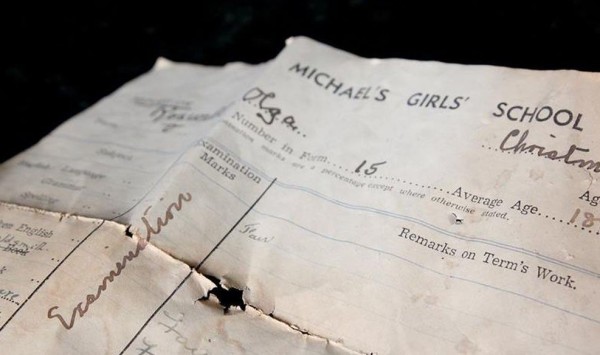THE GREAT BROOKLYN FLOOD OF 1903
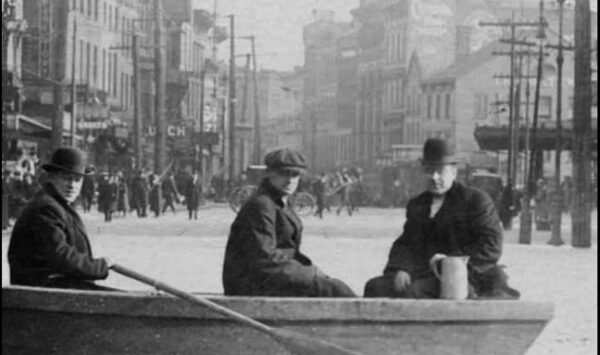
******************************************************************************************************************************** Brownstone Detectives investigates the history of our clients’ homes. The story you are about to read was composed from research conducted in the course of one of those investigations. Do you know the history of YOUR house? ******************************************************************************************************************************** By 7 a.m. on Friday, 9 October 1903, the cellars all along Macon Street were completely inundated with water that was rising quickly toward the basement joists. Without let up, the turgid brown waters continued to pour into the homes through the under-stoop doorways until the floodwaters had reached the level of the basement windowsills, whereupon it then began to pour also through the windows and into the basement dining rooms. The Ocean Hill area, like much of Brooklyn, had fallen victim of the heavy rains that had been falling continuously for much of the night. All the residences along Hancock, McDonough, Macon, Decatur, Bainbridge and Chauncey Streets were so flooded that residents on the ground floor apartments discovered upon waking that they were forced to go to the second floors to escape the waters. “IN SARATOGA PARK…BENCHES WERE FLOATING ABOUT…” The paths in Saratoga Park, according to one newspaper account, “had become running streams and benches were floating about.” The nearby Putnam and Halsey streetcars stopped running, as “it was impossible to take on any passengers, as the water was as high as the seats.” Streets and sidewalks were submerged under several inches of water, and, eventually, furniture moving vans were pressed into service by the police to be used […]
HOW A CENSUS-TAKER SAVED OUR BLOCK (1900)
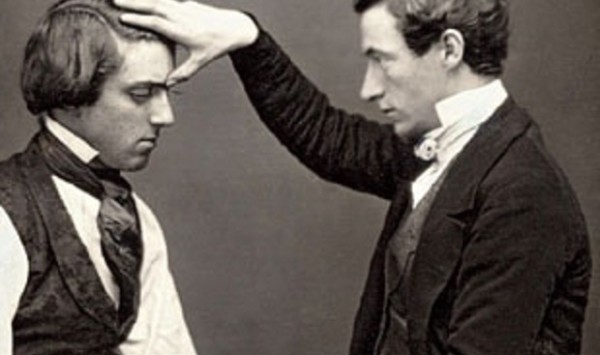
******************************************************************************************************************************** Brownstone Detectives investigates the history of our clients’ homes. The story you are about to read was composed from research conducted in the course of one of those investigations. Do you know the history of YOUR house? ******************************************************************************************************************************** I can tell you a little bit about every single family on my block. Well, not the present day families, of course – that might be a little creepy. Actually, it is a lot easier to extract such personal information about the families that lived on my block more than 100 years ago – in the year 1900. No, I am not a mesmerist or paranormal investigator. I don’t read cards or tea leaves. Nor do I make tables float or ask the spirit guides to knock in answer to my questions. I happen to use a less fantastic, more pedestrian source for this type of information for my answers. For, you see, I am a Brownstone Detective – and I use the 1900 Federal Census. I’M FROM THE FEDERAL GOVERNMENT AND I’M HERE TO HELP. The founders of our Federal government in the 18th century demanded that a decennial census be instituted. The demand was delineated within the U.S. Constitution, and the first attempt at listing Americans took place in 1790. The State of New York decided, too, that knowing who lived within its political boundaries was important. And so the state also began taking its own census in 1825. It was a decennial census, as well, which, in order […]
TO DENY A “COLORED” BLOCK PARTY (1920)
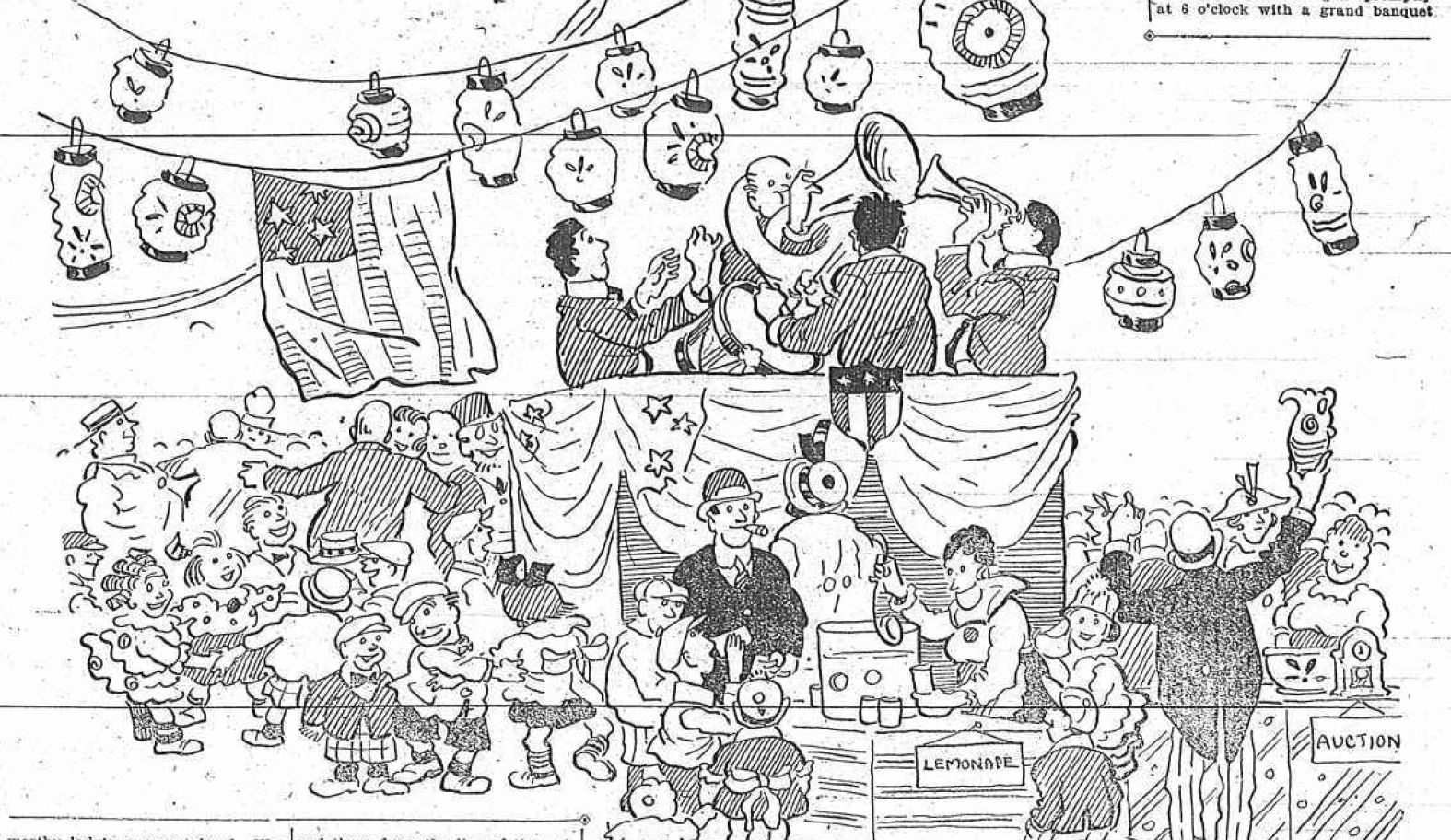
******************************************************************************************************************************** Brownstone Detectives investigates the history of our clients’ homes. The story you are about to read was composed from research conducted in the course of one of those investigations. Do you know the history of YOUR house? ******************************************************************************************************************************** Block party season upon us. It is a time of blocked-off streets, replete with the sounds of children happily playing, the smells of barbecues up and down the block, and carefree feelings of the beginning of summer. But this is also a time to remember some freedoms that were not always available to certain citizens – those freedoms for which struggles were necessary that they may be obtained. As such, it is instructive to remember how one group of people was often at the mercy of the whims of another. This story tells a tale that took place in 1920 when block party permits were not always so easy to obtain, particularly when the freedoms of those in the minority were proscribed by those in the majority… THE TRICKLE STARTS… In the mid-1930s, after the “A Train” had been extended into Brooklyn, African-Americans began to move in large numbers from Harlem into Bedford-Stuyvesant. Although the Eighth Avenue Express was the vehicle for that migration, the impetus was a desire for less crowded neighborhoods, more plentiful jobs (at the Brooklyn Navy Yard), and better housing conditions. The trickle that started this migration, though, began about 10 to 20 years earlier as African-American professionals of southern and Caribbean descent made their way to […]
THE “7-SECOND MAN” OF BED-STUY (1918)
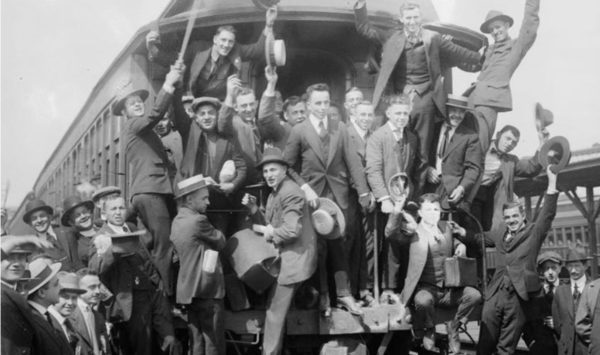
******************************************************************************************************************************** Brownstone Detectives investigates the history of our clients’ homes. The story you are about to read was composed from research conducted in the course of one of those investigations. Do you know the history of YOUR house? ******************************************************************************************************************************** The new “Victory and Peace” war memorial at Saratoga Park, located in the Stuyvesant East section of Brooklyn, was the subject of a public dedication on 10 September 2014. The Brownstone Detectives worked closely with the Parks Department by locating pictures, stories, and relatives of the Stuyvesant Heights men who gave their lives in the Great War. This biography is about one of those men. PRIVATE EDWARD J. BELL In 1920, as the “War to End All Wars” was still fresh on America’s collective conscious, American Legion posts were sprouting up everywhere. The trend existed for two reasons: to support the men who had come back from the front, and to memorialize those who never returned. Many of the posts were named after those who had made the ultimate sacrifice. The Edward J. Bell Post No. 790 had recently been formed to honor Edward Joseph “Eddie” Bell, a 25-year-old machine-gunner, and Purple Heart winner, who died in France on 16 August 1918, from the result of injuries sustained in combat. Born on 6 November 1892, Bell had lived with his father, his aunt and his grandparents at 735 Macon Street. Sometime around 1910, the tall, black-haired, and blue-eyed Bell had graduated from Commercial High School, and soon thereafter lost his father. […]
“BLOWN TO PIECES” ON MACON STREET (1916)
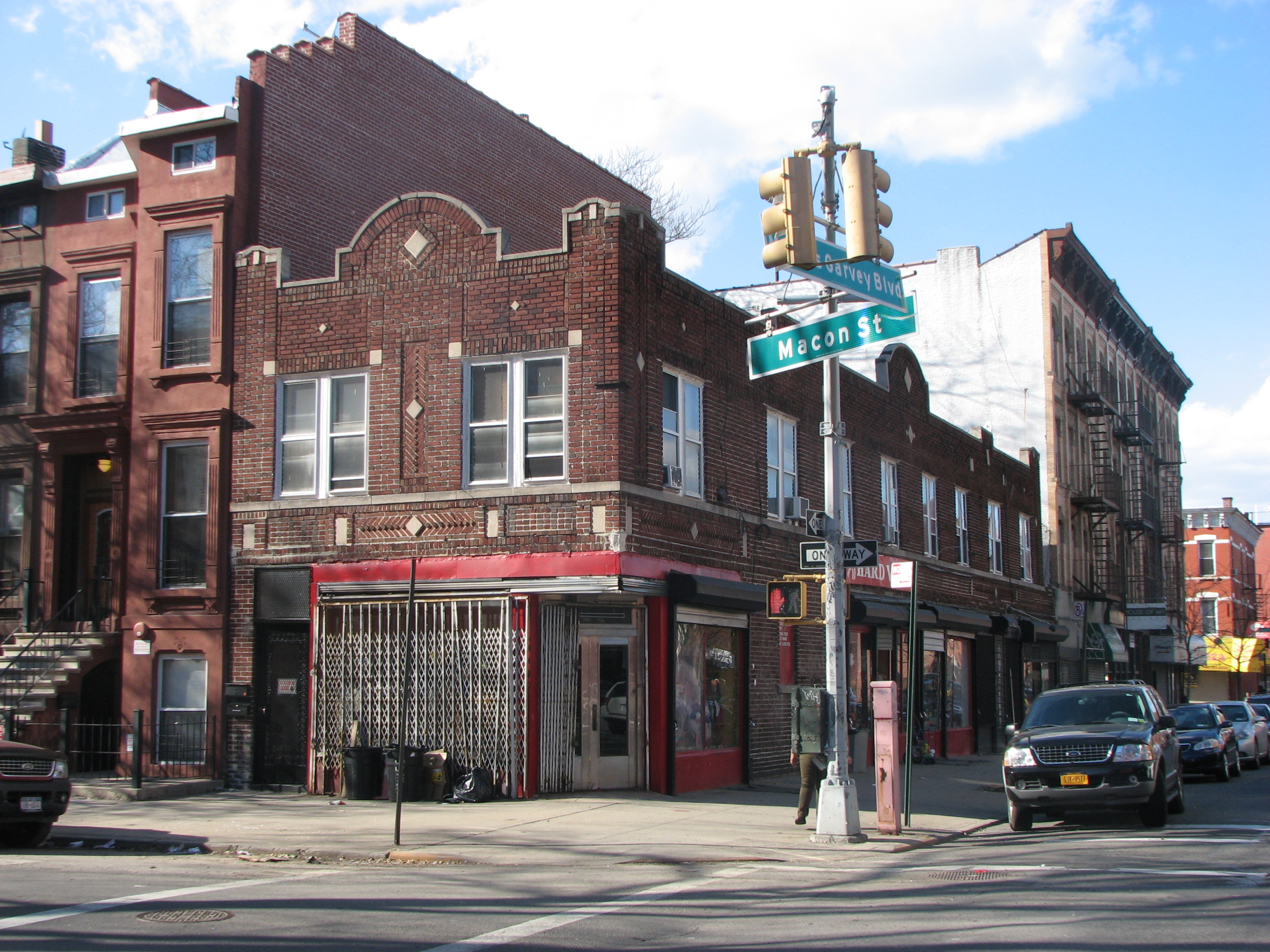
******************************************************************************************************************************** Brownstone Detectives investigates the history of our clients’ homes. The story you are about to read was composed from research conducted in the course of one of those investigations. Do you know the history of YOUR house? ******************************************************************************************************************************** On a warm summer morning in 1916, five people were killed and “more than a score were injured” when a masonry building on Macon Street was “blown to pieces” in a gas “explosion” occurring shortly after most of the building’s inhabitants had left for work for the day. Authorities were still attempting to determine who may have been in the building at the time of the blast, but the source of the explosion was believed to be a gas leak from the cellar of the building. THAT WAS THEN, THIS IS NOW This story was written more than 100 years ago, in 1916. The explosion, which fractured many Brooklyn lives, took place in the middle of Stuyvesant Heights at the corner of Macon Street and Sumner Avenue (now Marcus Garvey). Similar in detail to the East Village gas explosion of a few years back, only the time and place has changed. Both the buildings were residential with stores on the ground levels, and the 1916 explosion, itself, was also caused by a gas leak. Apparently, gas leaks have been leveling buildings since buildings were being plumbed with the element. In 2015’s explosion, the gas in the building was used for heating the apartments and the building’s water. In 1916, the gas […]
THE CRUMBLING OF MACON & MALCOLM
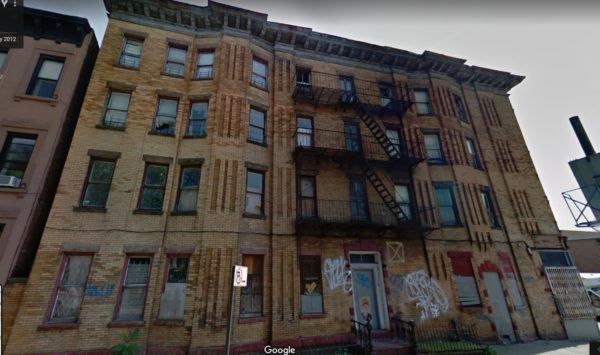
******************************************************************************************************************************** Brownstone Detectives investigates the history of our clients’ homes. The story you are about to read was composed from research conducted in the course of one of those investigations. Do you know the history of YOUR house? ******************************************************************************************************************************** (This post has been updated as of 8 February 2021.) The apartment building at the corner of Malcolm X Boulevard and Macon Street, No. 265 Malcolm X Blvd/546 Macon Street, which was constructed ca. the 1890s, has experienced an increased deterioration in the past 20 years. Although we don’t have a current snapshot of the building, the Department of Buildings notes that there is a sidewalk shed there, the existence of which was likely due to a failure to maintain building (i.e., falling glass, mortar, cornice, &c.). The building is currently owned by the Mission Field Church. The property has 12 complaints and 33 open violations. See in pictures how the structure has deteriorated over just the past ten years. Follow @BrownstoneDetec Share ———————————————————————————————————————– The Brownstone Detectives Brownstone Detectives is an historic property research agency. Our mission is to document and save the histories of our clients’ homes. From our research, we produce our celebrated House History Books and House History Reports. Contact us today to begin discovering the history of your home.
CALVIN COOLIDGE & THE BUNNY HUG (1922)

******************************************************************************************************************************** Brownstone Detectives investigates the history of our clients’ homes. The story you are about to read was composed from research conducted in the course of one of those investigations. Do you know the history of YOUR house? ******************************************************************************************************************************** Vice-President Calvin Coolidge came to the Eastern section of Stuyvesant Heights one night late in 1922 to stump for the local Republican senator ahead of the mid-term elections. And in so doing, he would wind up in a nite club known for its bawdy dancing and raids on its illegal booze sales. It was the country’s first “working girl’s model dance hall,” The Arcadia. Dedicated specifically, at the time it was built in 1912, to “proper” dances for working girls, the hall – located at the corner of Halsey Street and Saratoga Avenue, across the street from Saratoga Park – had been supported by proponents who had lobbied successfully for anti-tango legislation, designed to outlaw “the turkey trot and other sensational dances.” For several years, the hall was a chaste facility which forbid “bunny-hugging” and tangoing, and kept a number of dance monitors on the dance floor to enforce these rules. You broke them once and you were kicked out for good – never allowed to return to the popular dance spot. Ten years later, though, it was the era of Prohibition, and the hall’s reputation had sunken somewhat in the estimation of its neighbors. Being the largest dance hall in the area, though, Vice President Calvin Coolidge would use it […]
THE LONG SLOW DEATH OF REID SQUARE (1870)
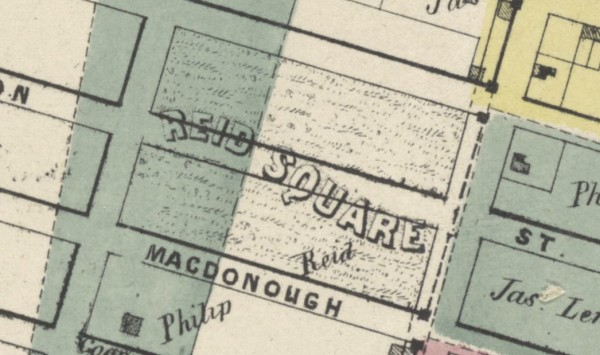
******************************************************************************************************************************** Brownstone Detectives investigates the history of our clients’ homes. The story you are about to read was composed from research conducted in the course of one of those investigations. Do you know the history of YOUR house? ******************************************************************************************************************************** Laid down by the Brooklyn street grid commissioners in the 1830s, Reid Square was a planned park that was to be comprised of two of Brooklyn’s city blocks in the Town of Bedford. Named after the owner of the farmland that the once-future park was to grace, Philip Reid, Reid Square never ended up being developed. The Square was to be bounded by Reid and Stuyvesant Avenues and Halsey and MacDonough Streets. Macon Street, which, for all intents and purposes, would have passed directly through the square at its center, was to be closed at that point. In 1869, however, as the park had been laid out but not improved, the Committee on Opening Streets of the Brooklyn City Common Council met and proposed a resolution to “draft an act to the Legislature to close Reid Square and lay down Macon Street from Stuyvesant to Reid aves.” This proposal was adopted and later in April of 1869, the Legislature passed the act, dooming Reid Square to an historical footnote. It is quite probable that powerful real estate speculators at the time forced the planned public square into its stillborn state, allowing the properties on these streets to be broken up into lots and then sold at auction for development purposes. Follow @BrownstoneDetec […]
FOOLING THE UNDERTAKER, PT. II (1900)
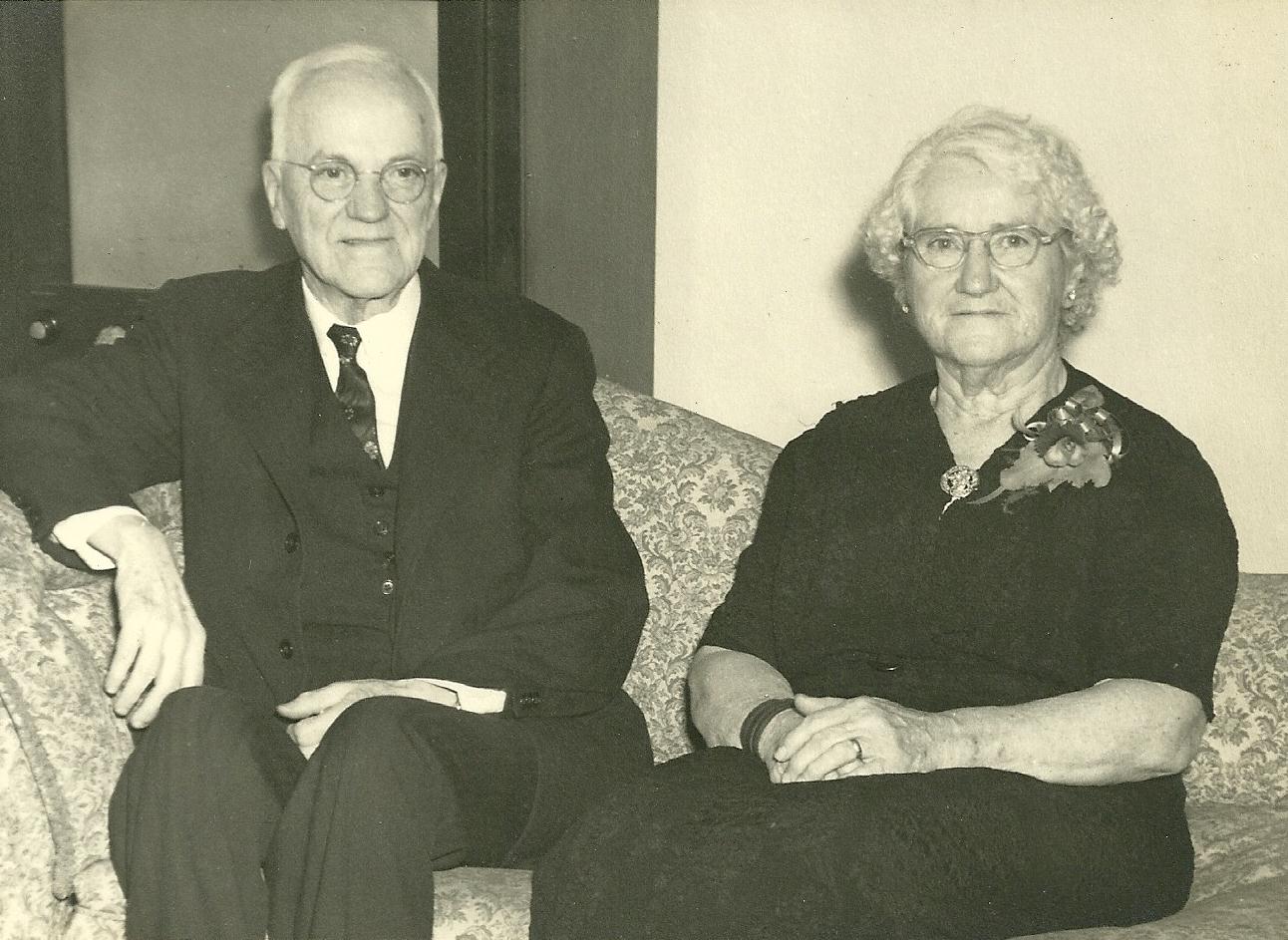
(Continued from Part I of Fooling The Undertaker) The first time that Park returned to Ralph Avenue for his Miss Twaddle, the watchful Twaddle boys were there to meet him. They refused to allow Miss Twaddle to see Park, and so he returned home both frustrated and empty-handed. Park knew he would have to find a way to outsmart the Twaddle boys. None of them was married, and so it was clear to him that they didn’t understand true love. Hardcastle, the undertaker (and Park’s former boss), was another obstacle to overcome – he, too, had never married. And while Park was sure of Hardcastle’s eagle’s eye, he was just as certain that Hardcastle’s hearing had not been cured a few years ago by Dr. Copeland’s quack patent medicine. So, when Park returned the second time in late May of 1900, he had already planned their escape, guiding Miss Twaddle’s actions and informing her where to meet him. Miss Twaddle would tiptoe down the stairwell, being exceedingly quiet. When she reached the door, she would walk in the opposite direction of Hardcastle’s parlor and down Macon Street toward Saratoga Square. On this second visit, Park was successful. Meeting up with Miss Twaddle, he spirited her away with him – and away from her life on Ralph Avenue. The two had “eloped” in grand fashion, making their way to a church far enough away from Ralph Avenue that they could marry without interference – which they did – that day. Afterwards, […]
